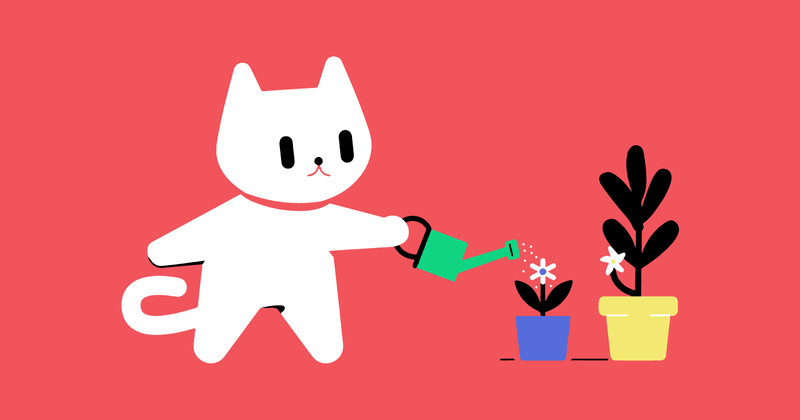How to win back lost customers
A beginner's guide to win-back campaigns from Aperture's Hannah Parvaz

Hannah Parvaz is the Founder of Aperture. A multi-award-winning marketer, coach and mentor, Hannah was named App Marketer of the Year in 2019 and has spoken internationally on the future of app growth, privacy, and leveraging data analytics.
It wasn’t until I went through my first-ever benchmarking session with Apple, back in 2017, that I started to learn about win-back strategies. Back then, I found out that our win-back rate was extremely low: we had a 6% month 2 win-back and an 8% month 6 win-back.
Although, within our peer group we had the highest paid subscriber retention rates, our win-back rates were abysmal. The best performing in our group was winning back at a 35% rate by month 6.
In our defence, we were a young product and had spent exactly zero hours working on our win-back strategies.
That 35% astounded us. It kicked us into gear and very soon after, we were elbows deep focusing on win-backs. There was a lot of opportunity — we could only go up from there.
Understanding the broader context is crucial though. For most subscription apps, especially those with a paywall with a trial that appears during onboarding, 80% of the trial opt-ins occur within the first two minutes of someone downloading and opening the app. Yes, that means 80% of all of the people who ever start a subscription on your app will do it in their first session.
“80% of trials happen within 120 seconds of someone opening the app for the first time.”
What I’ve seen, again and again, is that the trials taken out after the first two minutes tend to convert about 20% better than those that happen earlier in the customer journey.
This might make you question whether there’s any point in asking during the onboarding flow; however, excluding this initial ask early in our customer journey would dramatically reduce opt-ins. And, when I say dramatically, I’ve tested extensively around this and have seen over 80% drops in opt-ins. The decrease in trial opt-ins reduces so much that this increase in conversion barely matters.
Once we zoom out and understand the macro view of all this, we can see how important it is to keep track of how we win back customers. For us, an 8% win-back rate after six months seemed like low-hanging fruit — we had left a hell of a lot of room for improvement.
What are win-back campaigns?
Win-back campaigns are efforts we make to try to re-engage people who have stopped using our product. We say that this group of people who have stopped using our product has “churned”. More specifically, when we’re thinking about subscription apps, these are campaigns targeting anyone who has turned off auto-renew on their subscription and whose billing period has elapsed, encouraging them to take out another subscription—in other words, they’ve cancelled their subscription and you want them to re-subscribe.
The focus of these campaigns is on understanding why someone has left and addressing those specific reasons to encourage them to return. To do this effectively, we need to create personalized offers, use targeted messaging, and make people feel like their needs are heard.
When I worked on my first win-back campaigns with our incredible developer, Santtu, the first thing we did was build a small banner into our app. Without getting too technical, when a user cancels an App Store subscription, their billing status for that subscription will change from an active/paid status (e.g. 1) to a cancelled status (e.g. 0).

What triggered the appearance of this banner was the change in billing status, and it offered a discount to resubscribe. Simple. Immediately, we started to see an uptick. This was just the beginning.
Why should we build win-back campaigns on the web?
Now that you’ve got an understanding of what a win-back campaign is, we can start to get a little more technical. Here are a few more stats, facts and figures that you need to know to wrap your head around why this is important.
App developers pay Apple and Google 15% of their revenue if they earn less than $1 million per year. If they’re making more than that, they pay 30%. That’s a good chunk of cash. On the plus side, the 30% applies to the first year, and it’s only 15% off the subsequent years.
Not everyone wants to give away such a significant chunk of money, and I don’t blame them.
On top of that, the time it takes to receive that money is fairly significant, often taking over 2 months.
The other thing you can do is put your payments through your website. This is something that more and more companies are deciding to do: build a web experience.
When someone pays through your website, your Merchant of Records (MoR) changes and will be managed in a different way, for example through Stripe rather than the App Store or Play Store. When Stripe manages your payments, you pay them around 3% and you get your payout within around 3 days. It’s pretty different.
I’ve been building and optimising web flows for my apps since 2014, and it’s only since the advent of SKAN that these have been prioritized. Since then, platforms like RevenueCat have emerged to help us boost our conversion.
💡 Learn more: Find out how RevenueCat Billing (beta) simplifies web subscriptions for mobile apps.
So, how do we actually do this?
1. Understand why
The most important thing to do when building any new channel or function is to have a thorough understanding of why. You can do this with surveys and feedback forms, however, I’d strongly recommend getting onto the phone with some real people and talking 1:1 to them. You should also be paying attention to the data you have available. How are people engaging and what are they doing in your product?
2. Use multiple channels
Push notifications can drive conversion up by more than 25%, however you shouldn’t stop there. Experiment with in-app notifications, targeted re-engagement ads (which might just be getting a little easier to do with iOS18), and email.
We’ve developed email flows that onboarded customers and educated them about the product. After they were in our eco-system for a while, and had either cancelled or not converted, we would send them discount offers. These emails would be directed to a web landing page, through which a customer could buy a subscription on the web, with their card or through Google Pay and Apple Pay.

3. Experiment
The offer you start with and the channel you start with won’t necessarily be your most impactful channels. Create a backlog of different initiatives and start to work through those.
We ran an A/B test to see whether people would convert at a higher rate with a higher discount, so we offered 20% off to group A and 30% off to group B. Both groups converted at the same rate, which meant that we had a larger margin on this sale and that we could reinvest this money in marketing.
What you test doesn’t need to be typical. At Curio we ran an experiment which:
- Offered people a discount
- Made an ask and said to follow up for a discount
- Made an ask and offered a discount at the same time
Whenever we asked for help and offered a discount at the same time, we saw a higher engagement.

4. Be persistent but not annoying
Getting the timing right for when you’re sending your win-back messages is crucial. Reaching out too soon after a user has churned may be ineffective, as they might need more time to reconsider. Conversely, waiting too long may result in the user losing interest altogether. Finding the right balance is key. At one of my companies, we identified that the average day our annual subscribers changed their billing status was around day 290, so guess when we focused? Spoilers: Day 280.
Conversely, I cancelled my Netflix subscription back at the beginning of the year, and never received a peep from them. I just went back through my emails to check, and nope: nada — nothing. They could have very easily sent across some emails or comms about new episodes of shows I had previously watched, especially since I was paying through the nose for the HD version with multiple users. I cancelled because there wasn’t enough content coming out that I was interested in, and the price kept going up despite this. And they didn’t persist.
5. Optimize your web flows
Although you may not be directly attributing your win-back conversions to email, push notification, social media, or even your ads, you still need to make sure that you’re constantly optimizing your web flow. Are you making it clear what you’re offering? Are you making it as easy as possible and removing all friction? I love how Mindful Mamas do it here, from their email, it takes you directly to a payment page where you can pay with Google Pay or with your card details: spoiler, this is facilitated through Stripe.
Simplifying and optimizing your flow can result in 50%+ increase in conversion, so make sure you’re paying attention to where people are dropping off. Not many companies are doing this well, so there are big opportunities here.

Where do I get started?
If you don’t already concretely know the reasons why someone is churning, it’s time to find those out. Set yourself a goal of talking to five people this week — just five for 30 minutes each — about why they’re no longer using your product. Record what you find out and use these learnings as the foundation of your win-back campaign. Personalize your offers, tailor your messaging, and show your churned customers that their needs and concerns and being heard.
Understanding the “why” is the first step to improving your win-back rates. From there, use multiple channels to reconnect with your users. Remember to experiment with different offers and timing to find what resonates best.
Keep in mind that the offer you start with and the channel you begin with may not be the most impactful work that you ever do. Don’t be afraid to iterate and try new approaches. For instance, we found offering different discount rates (20% vs 30%) in A/B tests helped us to better understand our margin and reinvest in marketing strategies.
Lastly, be persistent, but not annoying. Timing is crucial — too soon and it might be ineffective, too late will result in lost interest. Find the balance that works for your audience.
Implementing these strategies can significantly improve your win-back rates, as it has for many of our partners at Aperture.
Get more insights from Hannah at Aperture in their newsletter.
You might also like
- Blog post
Modeling attribution on iOS: what works, what doesn’t, and how to choose
How to navigate the messy world of SKAN, AEM, and probabilistic attribution — plus two practical frameworks to get a clearer picture of campaign performance.
- Blog post
Your sprints must pay for themselves: Dan Layfield’s product advice
What’s worth building? Dan Layfield shares a 3-bucket framework to help app teams prioritize features, fix churn, and ship faster.
- Blog post
Is monetization hurting your app’s user experience?
Don’t trade short-term revenue for long-term trust. How ethical UX can still drive effective monetization.

